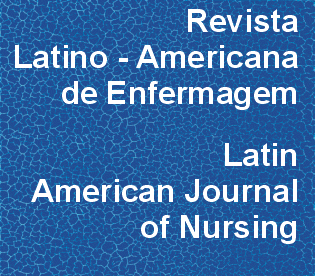Acesso potencial à atenção primária em saúde: o que mostram os dados do programa de melhoria do acesso e da qualidade do Brasil?
DOI:
https://doi.org/10.1590/1518-8345.1069.2672Resumo
Objetivo: analisar a influência de indicadores contextuais no desempenho dos municípios, no que tange ao acesso potencial à Atenção Primária à Saúde no Brasil e, ainda, discutir a contribuição do trabalho da enfermagem nesse acesso. Método: estudo descritivo multicêntrico, a partir de dados secundários da Avaliação Externa do Programa de Melhoria do Acesso e da Qualidade da Atenção Básica no Brasil, com a participação de 17.202 Equipes de Atenção Básica. Recorreu-se ao teste qui-quadrado de proporções para verificar diferenças entre os estratos de municípios, no que se refere às dimensões territorialização, oferta, coordenação, integração, e, quando necessário, foram considerados os testes qui-quadrado com correção de Yates ou exato de Fisher. Para a variável população, foi aplicado o teste Kruskal-Wallis. Resultados: a maioria dos participantes era de enfermeiro (n=15.876; 92,3%). Observaram-se diferenças estatisticamente significativas entre os municípios em termos de territorialização (p=0,0000), disponibilidade (p=0,0000), coordenação do cuidado (p=0,0000), integração (p=0,0000) e oferta (p=0,0000), verificando-se que o municípios que compõem o estrato 6 tendem a ter melhor performance nessas dimensões. Conclusão: verificou-se que os estratos 4, 5 e 6 apresentam melhor desempenho em todas as dimensões analisadas e, também, o papel preponderante do enfermeiro no acesso potencial à Atenção Primária à Saúde no Brasil.Downloads
Os dados de download ainda não estão disponíveis.
Downloads
Publicado
2016-01-01
Edição
Seção
Artigos Originais
Licença
Os direitos autorais são de propriedade exclusiva da revista, transferidos por meio da Declaração de Transferência de Direitos Autorais (presente no Formulário Individual de Declarações) assinada pelos autores. Para a utilização dos artigos, a RLAE adota a Licença Creative Commons, CC BY-NC Atribuição não comercial (resumo ou código completo da licença). Com essa licença é permitido acessar, baixar (download), copiar, imprimir, compartilhar, reutilizar e distribuir os artigos, desde que para uso não comercial e com a citação da fonte, conferindo os devidos créditos autorais a Revista Latino-Americana de Enfermagem. Nesses casos, nenhuma permissão é necessária por parte dos autores ou dos editores.Como Citar
Acesso potencial à atenção primária em saúde: o que mostram os dados do programa de melhoria do acesso e da qualidade do Brasil? . (2016). Revista Latino-Americana De Enfermagem, 24, e2672-. https://doi.org/10.1590/1518-8345.1069.2672



